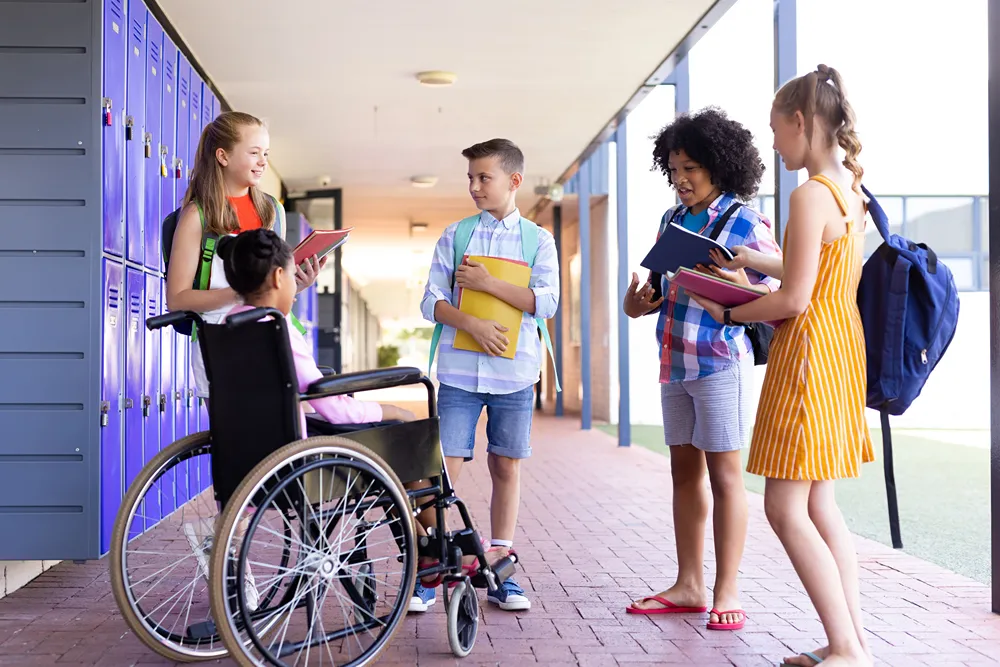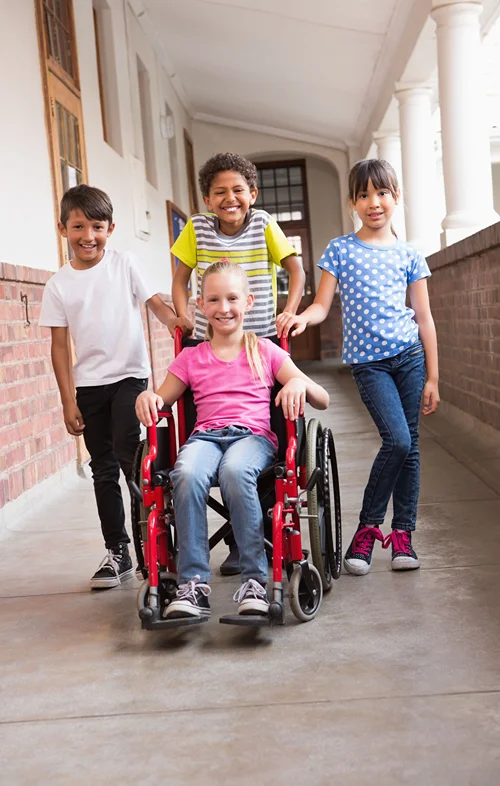Teaching Kids to Include a Classmate Who Uses a Wheelchair
Fostering kindness and inclusion in children is an important part of teaching them how to build relationships with others, including those with different abilities. If your child’s class includes a student who uses a wheelchair, guiding them on how to be inclusive can help create a more supportive environment for everyone.
We have outlined four tips for parents to teach children how they can support and befriend a classmate who uses a wheelchair.
Talk With Them About Disabilities
The first time your child encounters a person who uses a wheelchair, they are likely to have questions about their differences or their health. Children are naturally curious, so take the time to answer their questions in a clear and age-appropriate way. Explain that some children may use a wheelchair to get around for different reasons, such as physical conditions that make walking difficult. Teach your child about inclusion and ableism by explaining how everyone deserves respect, regardless of their abilities.
Model Positive Attitudes
Your own behavior can have a significant impact on shaping your child’s attitudes toward inclusion. Use respectful and inclusive language when talking about wheelchair users, emphasizing their abilities rather than their limitations. Gently remind your child that although others may live their lives differently, it doesn’t mean their lives are more difficult or challenging.
Teach Kids to Be Patient
Building patience is key when helping your child make friends with a classmate who uses a wheelchair. Explain that certain activities like moving between spaces or participating in classroom games might take a bit more time. Encourage your child to slow down and give their classmate the chance to fully engage without feeling rushed.
Although some activities may take longer for wheelchair users, make sure kids know not to assume they need help or maneuver their chair without asking. A better approach is to ask first if they need help and ask what they can do to assist in a way that’s respectful.
Encourage Getting to Know New People
Encourage your child to talk with their classmate who uses a wheelchair and find common ground. Taking the time to genuinely get to know someone leads to stronger relationships and helps kids see beyond any differences.
Simply asking them to play, join an activity, or participate in a conversation can be a wonderful way to break the ice and start building a friendship. Small gestures of inclusion and kindness often make a lasting difference and show that you value someone for who they are.

Engage in Shared Interests and Activities
One of the best ways to build meaningful friendships is by participating in activities together. Encourage your child to involve their classmate in whatever game or project is happening.
Many activities, like art projects or storytelling, are naturally inclusive, but you can also look for wheelchair-friendly outdoor activities like nature walks on accessible trails or sports designed to be inclusive. Doing things together helps children bond over shared experiences and discover their similarities.
Small Actions Make a Big Difference
Teaching kindness and inclusivity starts with small but meaningful steps. Helping your child understand and appreciate the experiences of a classmate who uses a wheelchair fosters friendship and strengthens the community around them. Encourage children to take these lessons to heart and make inclusion a natural part of how they interact with others.




